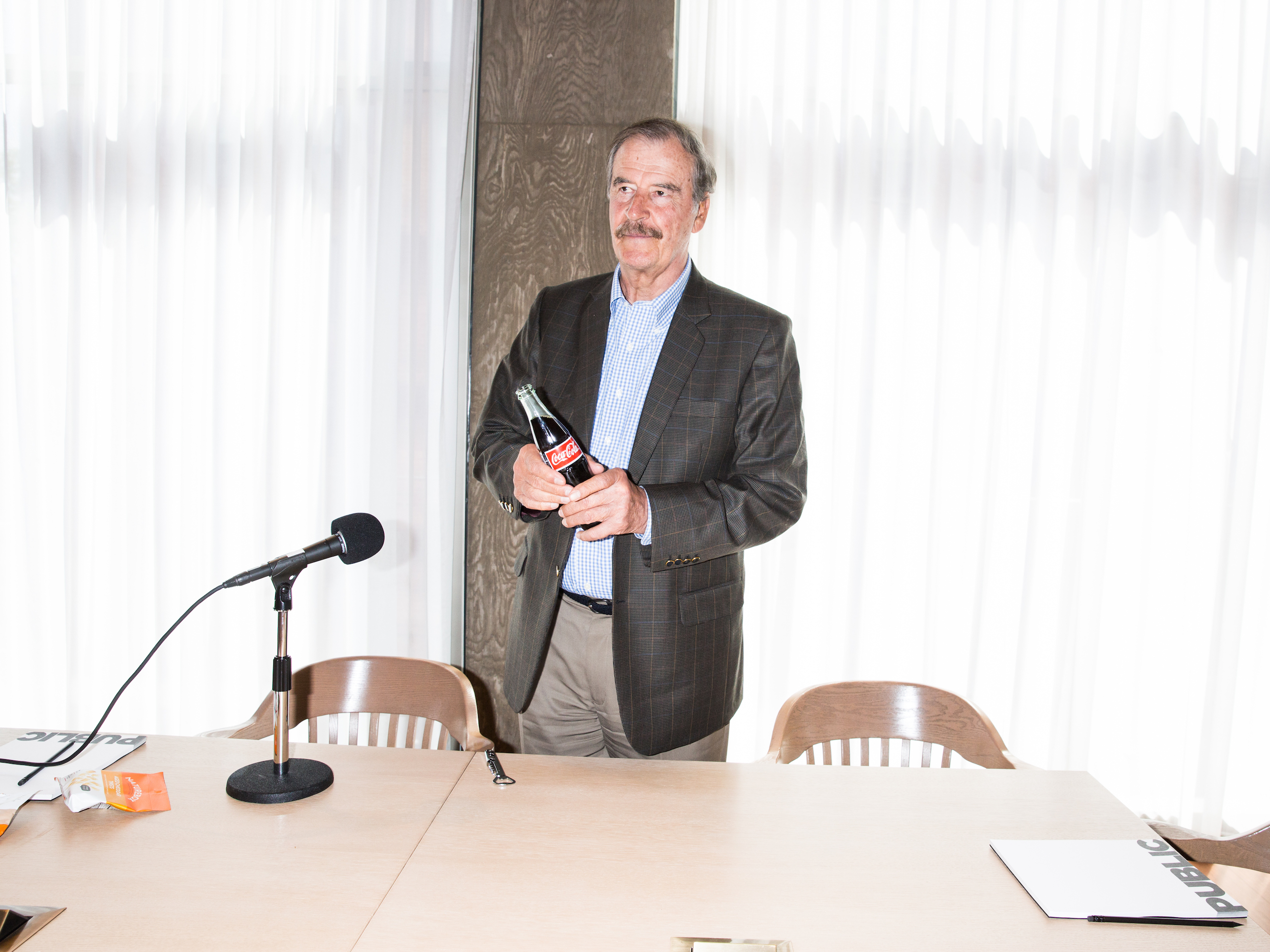- The average Mexican drinks more than 700 cups of Coca-Cola a year – nearly double what Americans drink.
- Coca-Cola rose to popularity in Mexico starting in the 1960s with the help of Vicente Fox, the former president of Mexico, who started his career driving around, making deliveries for the company.
- The soda has become an integral part of Mexican life, even intersecting with politics and religion in certain regions.
- In Business Insider’s new podcast “Household Name,” Fox explains how he spent his early days working his way up the ranks of Coca-Cola. To hear the full story, subscribe to the podcast for free here.
The average Mexican drinks more than 700 cups of Coca-Cola a year – nearly double what Americans drink.
But Coca-Cola wasn’t always such a huge part of Mexican culture. It grew slowly in popularity as one of its delivery workers – Vicente Fox – rose up the ranks to become president of Coca-Cola Mexico and eventually, president of the whole country.
Coca-Cola had been in Mexico for decades before it started booming in popularity. In the early 1970s, an international ad campaign for the drink swept across Mexico. Around the same time, Coca-Cola sponsored the Mexico City Olympics and the World Cup.
Coke was so popular that in 1970, then-President Luis Echeverría tried to get the recipe and nationalize it. Though his attempt was unsuccessful, it was a testament to how closely intertwined Coca-Cola and Mexican politics had become.
Coke is now a big part of Mexican life, not just politics. Here's how it became so popular:
The story begins in the 1960s, long before Vicente Fox became the president of Mexico. Back then, Fox was working for Coca-Cola as a salesman, delivering Coke to local businesses. Fox said he would incentivize local businesses to become exclusive to Coca-Cola, rather than Pepsi.

In 1971, an iconic Coca-Cola ad campaign caught on in Mexico. Around the same time, Coca-Cola sponsored the Mexico City Olympics and, later, the World Cup. Coca-Cola marketing was everywhere in Mexico.

After 10 years, the market share was on the side of Coca-Cola. So Fox got promoted.

Fox was angry about how anti-big-business the government was. But moving through the ranks of Coca-Cola meant dealing with politics.

One day, Fox said he was called into the presidential house. Then-President Luis Echeverría wanted the Coke recipe and to nationalize Coca-Cola and its bottlers.

To distract the president from his demand for the Coke formula, Fox said he and his team decided to show off the brand-new Coca-Cola shrimp farm. They were able to successfully distract Echeverría from trying to get the formula.

Not long after that, Fox became president of Coca-Cola Mexico. But he wasn't satisfied in the position. In 1979, he returned to his family farm.

Several decades later, he decided to work for the public instead. In 2000, he won the Mexican presidency.

Fox said that some of his first donations while running his campaign came from Coca-Cola. Even though Fox's presidency disappointed many Mexicans, Coca-Cola's business boomed while he was in office.

Part of why Coke was growing so explosively in Mexico around the time of Fox's presidency is because of the North American Free Trade Agreement. Mexico joined NAFTA in 1994, and it became way cheaper to buy Coca-Cola in Mexico.

It also became more accessible.

In some parts of Mexico, it was cheaper and easier to find Coca-Cola than clean drinking water. Many malnourished communities needed the calories, so they began drinking more Coke.

There are some places where it's used in religious ceremonies, like at the "Coca-Cola Church" in the state of Chiapas. It's really the St. John's Church, but that's not what most people call it. A few decades ago, the religious leaders replaced a traditional alcohol with Coke. They use it for a variety of things like decoration and healing, and they drink it in ceremonies.

But there was a downside to Coke's sudden spike in popularity — the diabetes rate doubled in Mexico between 2000 and 2007.

Coca-Cola provided the following statement to Business Insider:
The Coca-Cola Company and our bottling partners have long believed that we must conduct our business sustainably and grow responsibly by striving to do business the right way. As a total beverage company, we are working to provide people around the world with more of the drinks they want. We agree that people shouldn't eat or drink too much sugar and we're taking specific, meaningful actions to help people drink less sugar from our beverages. This starts with our support of the World Health Organization's guideline that people limit their daily calorie intake from added sugar to no more than 10 percent of their total calorie intake. It extends to the actions we are taking to provide smaller, more convenient package sizes; to introduce new reduced and no-sugar drinks; and to reduce sugar in existing drinks around the world.
We also are focused on lessening our environmental impact per liter of product we produce. Our environmental priorities and goals center on water, packaging, climate and agriculture. Our programs in these areas drive progressive, and sometimes industry-leading goals and we have institutionalized an approach to advance our business toward these goals around the world. With the help of independent third parties, and using generally accepted scientific methods, we estimated that we exceeded our initial goal to replenish all the water we use in our beverages and their production worldwide in 2015 and we continue to strive toward that goal year over year. For more information please review our sustainability report: https://www.coca-colacompany.com/sustainability.
Mexicans drink, on average, more than 700 cups of Coke a year — nearly double what we drink in the US.


